"GENETICALLY" SPEAKING......Dogs are either black or brown --
-B/B- D/D- E/E- K/K- = black OR b/b D/D- E/E- K/K- = brown
- other alleles (genes) act upon each other to create different colors or
different shades of colors.
It is theorized that all breeds of dogs have all of the alleles for different colors.
Some dogs have been selectively bred over many years to be dominant for a certain color or colors.
A few examples would be the Golden Retriever, Irish Setter, Weimaraner, Lab etc...
When you are looking at coat color, it is best to look at the entire picture.
The entire picture being all the alleles that encode for color.
You need to look at each individual allele and then put them together for the
complete coat color.
Keeping in mind that each puppy receives a copy of each allele from their parents.
The first listed allele is expressed, the second one is hidden or carried.
If one parent is brown (b/b)
[also called chocolate] the "b" allele is the ONLY one that can be copied and inherited
by the puppy. So, the puppy will receive a copy of the "b" allele from one parent.
If the other parent is B/B the only allele that the puppy
can receive is "B". So, every puppy will be B/b -- black, carrying brown.
Ch Finch's He Walks On Water, ROMS GC HOF
DILUTE BLACK DOWN AS FAR AS IT WILL GO AND YOU GET THIS :
IT IS CALLED " ICE WHITE "
If one parent is B/b, the puppy can receive either "B" or "b".
If the other parent is also B/b, the puppy can
receive either "B" or "b". The puppies could be: B/B - black; B/b - black, and carrying brown; or b/b - brown/chocolate.
Ch Stolanne's Burnt Sienna Kiss
DILUTE cHOCOLATE AS FAR AS IT WILL GO DOWN AND YOU GET THIS :
IT IS CALLED " WHITE CHOCOLATE " OR DILUTED BEAVER
ABOVE IS CAMELOTS ICE WHITE CHOCOLATE
The 'address' where the genes are located are called Locus (Loci is the plural).
Each Locus contains the different genes that are responsible for encoding (telling)
coat color. Some also change skin pigment (like the nose, eye rims and lips).
Each Locus, with it's genes, are important, because a breeder can either breed a
certain color into their breeding program or breed it out.
A breeder can either lighten or darken the coat color, also.
Coat color can also prove sometimes that the sire,
the person says sired the litter, couldn't genetically be the right one.
Pigment distribution patterns are controlled by the E and A Loci.
The E Locus is important because the genes from this Locus are responsible and
control black (E/E or E/e) and red (e/e) color.
If a dog is the black (E/E or E/e) color, ----
as other color genes are added, the color either changes or remains black.
Ch Starfire's Aunt-Jemima
The red red (e/e) color is the red color you see on an
Red Pomeranian
It comes in different shades OF RED , ORANGE AND CREME
are all red (e/e).
contains the genes that encode for :
wolf (a^w),
Can Ch Pondside Wings of an Angel
Am Can Ch Chriscendo Colour Picture
and recessive black (a^a).
Ch Finch's He Walks On Water, ROMS GC HOF
Most solid black dogs are solid black because they have the dominant black gene, but there is another type of black - recessive black.
Recessive black is very rare AND are thought to carry both recessive and dominant black.
Recessive black is thought to be on the A locus. It is denoted by a, and is generally put right at the bottom of the A locus because it is recessive to every other A locus gene
(sable Ay, agouti aw, tan points at, saddle markings as).
This means that if a dog has just one a gene, it will not be solid black
(but sable, tan-pointed, etc), as it needs two a genes for the recessive gene to work.
Recessive black is, aesthetically, no different to dominant black.
Ch Finch's He Walks On Water, ROMS GC HOF
The only difference is in the breeding - a solid black puppy could be born from two parents
who are non-solid black if they both carry (without expressing) one copy of the recessive black gene, whereas a dominant black pup could only be born if one or both of its parents are also dominant blacks.
Another important aspect of recessive black is that it is on a different locus to dominant black.
This makes it the only way that a dog can still be solid black if it is kk
Ch Finch's He Walks On Water, ROMS GC HOF
(non-solid black) on the K locus.
Unless you're a dog breeder, recessive black is unimportant (but it's still quite an interesting discovery!).
In order for this coloration to be expressed (seen), the dog must also be "k/k".
Ch Finch's He Walks On Water, ROMS GC HOF
All Pomeranians that have tan
points are "k/k", all Pomeranians
Am Can Ch Chriscendo Colour Picture
that do not have tan points are either "K/K" or "K/k".
If you breed two dogs that
have tan points, EVERY puppy in the litter will have tan points.
If you can't see any tan points, look
underneath the tail --- it's usually there before any place else on the body.
Am Can Ch Chriscendo Colour Picture
Color that is modified by diluting colors are controlled by the
B, C, D, and M Loci.
The dog will inherit all of these genes,
either in the dominant or recessive form.
These genes are the "ingredients" that will either:
not change, lighten, or darken the color of the coat.
Pomeranians that are black (K/K or K/k)
Ch Finch's He Walks On Water, ROMS GC HOF
[remembering that one copy of the gene comes from the dog and one copy comes from the bitch].
Since the alleles are in the dominant form, the alleles at the A Locus
can not be expressed (tan points can not be expressed, but may be 'carried' [hidden]). These are the solid
colored and self-merle dogs (no tan).
If the puppy gets the "B" gene (black) from his sire and a "B" gene from his dam;
he is then B/B. This says to stay black and not carry brown.
Ch Finch's He Walks On Water, ROMS GC HOF
If the Merle gene is added, the color would be black merle
(called blue merle in the Pomeranian breed).
Pombreden's Kauai Blue O-Ce-Ann
If the puppy gets B/b --- this says to stay black, but carry brown
(this is a hidden color and you can't see it). If
the Merle gene is added, the color would be black merle.
If the puppy gets b/b (brown) --- this says to turn the color to brown (chocolate).
This coloration also turns the
nose, eye rims and lips brown. It also will lighten the iris's of the eyes.
When bred to another dog with this
gene combination, ONLY brown puppies will be produced.
If the Merle gene is added, the color would be chocolate merle or Sable Merle
and will have a brown nose, eye rims and lips.
| Pombreden's Kialua Kona Koffee's - newborn to adult |
|
|
|
| Sable Merle |
| Pombreden's Kialua Kona Koffee's - newborn to adult |
|
|
|
|
The next gene added are the "D" genes. If he is black (B/B or B/b) and gets D/D, his black color remains the
same. If the Merle gene is added, the color is still black merle.
If he is black (B/B or B/b) and gets D/d, his black color remains the same,
but now he is carrying "d". If the
Merle gene is added, the color is still black merle.
If he is black (B/B or B/b) and gets d/d
(which is the homozygous recessive form),
that will dilute the black color to blue.
The nose, eye rims and lips will be gray. Sometimes, they are dark gray. The iris's are also lightened. If the Merle gene is added, the color will dilute to blue merle. This merle is true blue (d/d) merle and is much lighter than the black merle. In the true blue merle,
all of the black patches have been diluted to blue, gray, and pewter colors
(no black color is found). The nose, lips and eye rims will be also be gray.
If he is brown/chocolate (b/b) and gets D/D or D/d, his color remains brown/chocolate.
The nose, lips and eye rims are brown. If two dogs are mated that are both b/b D/D, all of the puppies will be brown. If the Merle gene is added, the color would be chocolate merle.
If he is brown/chocolate (b/b) and gets d/d, then his brown is diluted to a dull,
flat silvery-brown color called
The nose, lips and eye rims are a rosey-gray color.
If
two dogs are mated that are both b/b d/d (Lilac), all of the puppies will be Lilac. If the Merle gene is added,
the color will be a Lilac Merle.
This color is a very light coloration. Some puppies are born very light in color
and darken with age.
The next genes added are the C genes. If the puppy gets C/C to any combination of the B and D genes, his
color is dictated by the B and D genes. **NOTE: most dogs are C/C.
If the puppy gets the Chinchilla gene, this gene will not have any noticeable
affect on the black colored puppy.
If the puppy is a black merle, the diluted patches or gray, lighten to light silver.
If the puppy is blue, this gene will lighten him to a silverish blue color.
If the puppy is a blue merle, the diluted
patches will lighten even more.
If the puppy is brown/chocolate, this gene will lighten him to a light colored milk chocolate. If the puppy is a chocolate merle, this gene will lighten the patches even more.
Dogs that are k/k: remember that when the "K" is in the recessive form (k/k),
it allows the expression of the alleles at the A Locus.
The coloration, according to the gene pairs the dog has, would be the same as above, except now ----
whatever the dog is carrying at the A Locus is also expressed.
For example: now the tan points are expressed.
This is a mutation and does not allow any black hair
coloration to be produced. It doesn't matter what other genes are present,
the dog will be red, yellow, or tan.
The color shades can vary anywhere from white, pale yellow, biscuit color, butter cream, to a burnt red, fox red, orange, to a copper penny color. The color depends greatly on the genes at the D and C Locus. This
coloration is found in the Pomeranian breed.
Dogs that are (e/e) can range in the colors listed above and if they have a black nose,
lips, eye rims, are said to be genetically black.
Dogs that are (e/e) and brown (b/b), the color will not change to chocolate.
However, the nose, lips, eye rims
will be brown - readily identifying the dog as being genetically brown.
Dogs that are (e/e) and blue (d/d), the color will be diluted to yellow
(this is the fact *most* of the time, but not always -- the dog could be a reddish color).
The nose, lips, eye rims will always be gray - readily identifying
the dog as being genetically a diluted black (blue).
Dogs that are (e/e) and brown (b/b) and blue (d/d),
since the brown has no color changing effects, but blue
does ---- the dog will be diluted to yellow. The nose, lips, eye rims will be a rosey-brown
this is reffered to as Beaver in the Pomeranian breed .
CH Heartland's Knight N Day
NOTE: if the dog is K/K or K/k --- the tan points can only be carried, not expressed.
If the dog is k/k, the tan points, even though are expressed, may not be evident on the e/e red or yellow dog, as the tan points are usually the same color as the dog's coat.
The placement of white areas on the coat are controlled by the
S and T Loci
(Party Colored)
The genes located on the S Locus are very important genes to the Party Pomeranian breeder, especially those that breed merle to merle. ( Lethal White )
The S Locus is responsible for white spotting, no matter what other genes are being expressed and carried (hidden), including the merle pattern.
If the breeder is having too much white being produced, even though
the dog and bitch being used do not have much white on them, by understanding the genes responsible for
"adding" white, a breeder will know how to breed accordingly.
Even though a dog may have very little white
on him, he may be carrying a gene that encodes for lots of white.
When bred to another dog with these same
genes, the breeder usually gets a surprise with puppies having lots of white on them. Sometimes, if too much white is being produced on the offspring and parents are being used that do not have white, or have very minimal amount of white, using a different sire with that bitch sometimes alleviates the "too much white problem.. These genes are in order of dominance (from most to least).
The first gene is the "Self" gene (S) - this gene is responsible for solid color and is dominant over the rest of the genes. The chest spot and white under belly have been found to be caused by two different genes. The chest spot is dominant over the white under belly pattern (coloration). A dog that is solid color or solid color
with white on the toe tips, could be carrying any of the other spotting genes. And when bred to another dog with the same gene combination, could produce puppies without any white, very little white, or lots of white.
The third gene is the "piebald" spotting gene (s^p) - this gene is responsible for white being on 50% of the body. There are usually colored spots on the back. If a dog has the piebald pattern, he should not be bred to
another dog with the same pattern, unless you like dogs with that pattern. If a dog is piebald and merle (spots are merled),
he should not be bred to another merle with
the same pattern. This mating would surely
produce all white puppies, with some being
deaf and possibly blind.
The fourth gene is the "extreme piebald" spotting gene (s^w) - this gene is responsible for a dog being almost 100% white or white with only a tiny spot of color somewhere usually around the head area . Deafness and blindness is SOMETIMES associated with this spotting pattern. Not every dog that is the extreme piebald pattern will be blind or deaf. A person would not want to breed a dog with this pattern to a merle and surely not to a double merle.
The M Locus controls the dilution of the dog's coat in a patchy pattern of dilute and
normal color. It is an intermixed or patchy pattern of various dark and light areas of
color on the coat. Merle does not affect the tan points.
There is an additional merle modifying dominant gene that
turns the lighter patched areas white. It is believed that when the allelic pair is homozygous, it is an embryonic lethal.
Under the influence of the merle gene, a black coat becomes gray patched
with black and a brown coat becomes dilute red patched with brown.
Merle acts as a "minus" modifier (meaning it 'takes away color') for alleles of the "S" Locus (Spotting).
Merle is an example of incomplete dominance. This means it has intermediate expression:
"M/M" - Homozygous or Double Merle alleles produces almost white dogs:
These dogs have more white
than is normal for the breed (they are almost all white).
They may also have hearing losses and/or vision
problems. If "M/M" is present, along with the spotting gene,
these physical problems seem to be much worse.
When breeding merle to merle if any of the offspring are non-merle,
then neither parent is a
homozygous (double) merle. It is much better to breed a merle to a non-merle to avoid producing puppies with impairments.
If a person is set on breeding merle to merle,
then is it safer to breed a self merle to self merle.
A self merle is a dog with base color + merle pattern
and does not have any white on them
(they could, however; carry the irish, piebald, or extreme piebald alleles).
** NOTE: The homozygous merles that are almost all white or have much white
is due to the "doubling" effect of the merle genes on the Spotting genes
(irish, piebald or extreme piebald). Deafness and vision
impairments are thus caused by the LACK of pigment (white)
and are not solely caused by the effects of the
merle dilution gene in the homozygous form.
"M/m" - Merle, carrying non-merle. Merle pattern and the eyes can be blue or marbled (brown and blue segments in the eyes).
"m/m" - non-merle - Normal color - Non- merle.
Cryptic or phantom (as it's sometimes called)
merles are dogs which carry a merle gene but are
phenotypically (look like) tri, bi or self colored.
These dogs will have some small area of merling somewhere,
usually a tiny patch of merle pattern on their ear, tail, top of head, etc.
Keep in mind the tiny patch can be only
one hair and it can be located anywhere on the body.
Cryptic merles are very rare.
AGAIN, a cryptic or
visible merle can only be produced when one or both parents are merles.
An interesting theory is that merle is a "fragile" gene that easily allows the merle (M) gene to
mutate back into the non-merle (m/m) gene. This "fragility" may be caused by a transposon, which
is a small mobile "parasite" DNA element similar to a virus.
Rather than infecting other animals, the
transposon infects the host's offspring.
Much mammalian DNA consists of inactive "dead" (mutated)
transposons, which are found in
nearly all animals. Active transposons are a major cause of mutations. Transposons can move
around. When they "jump into" a gene they can disrupt its function.
The transposon responsible for merle is called "non-replicative," meaning that when it "jumps
out" of a location function may be restored to its host gene.
More often, the transposon excises
sloppily and leaves an irreparably damaged gene behind.
If the transposon excises cleanly in a
cell that goes on to become a sperm or ova, offspring conceived from that germ cell will revert to
wild-type.
The coat pattern of merles (M/m) would occur as some clonal
descendants would be from
migrating melanocytes which reverted from
(M/m) to (m/m) as they migrated to their final location
in the skin, producing black patches, while other clonal descendents
from other migrating
melanocytes would have remained (M/m), producing the lighter patches.
This theory also explains why occasionally a double merle (M/M) bred to black can produce a
black puppy. When this occurs the mutation most likely occurred in a germ cell. Of course, this
solid black puppy can also be (Mm) genetically but have such large patches of black that merling
patches are hidden. ~~ Erick Conrad



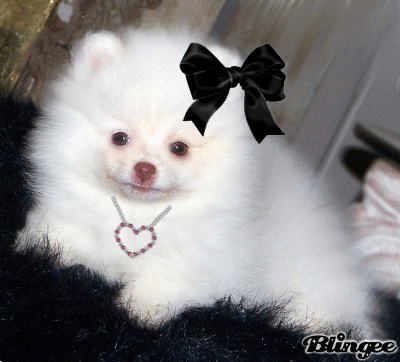

















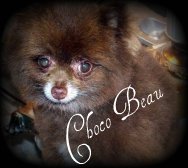
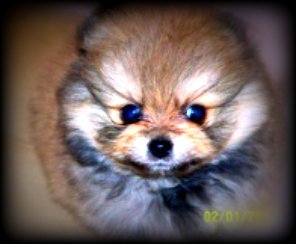




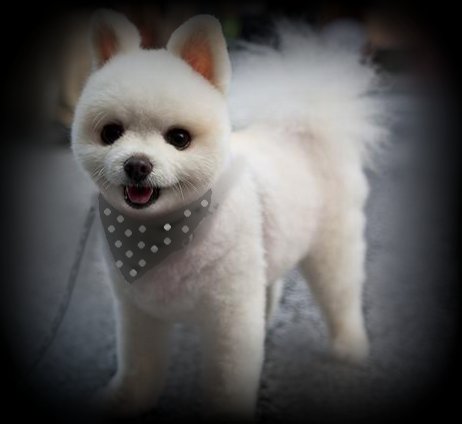
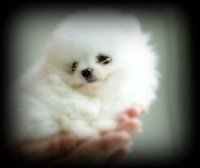
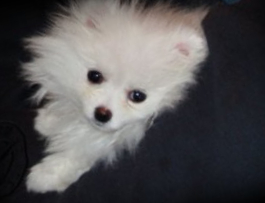
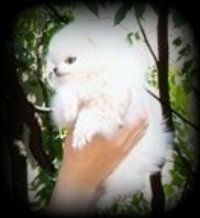
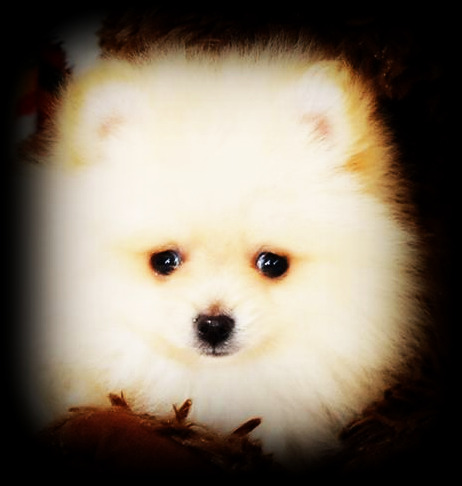
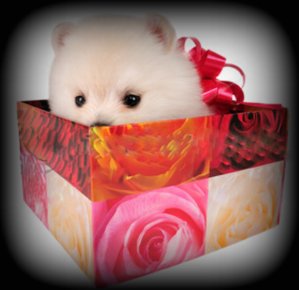







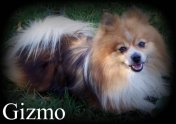
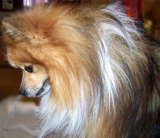






.gif?011336A6)


